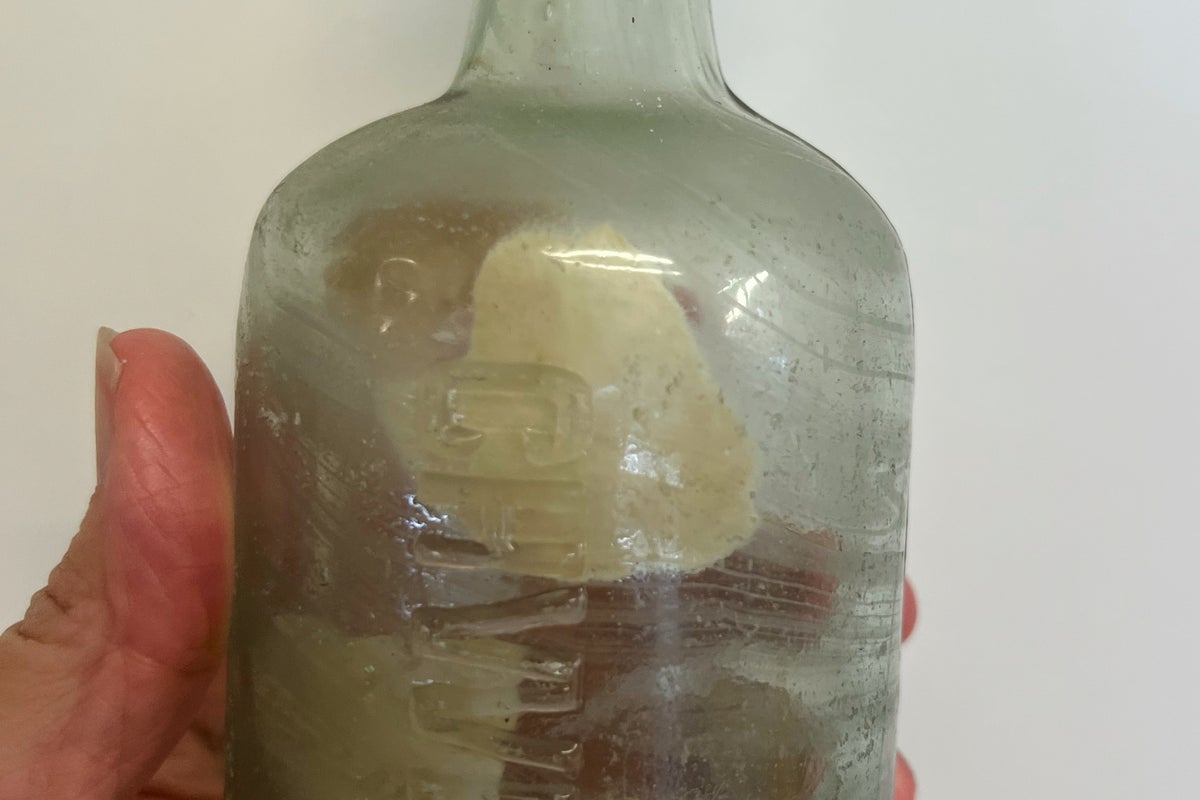
A discovery on an Australian beach has unearthed a poignant connection to the First World War.
Messages in a bottle, penned by two soldiers en route to the French battlefields, were found more than a century after they were cast into the sea.
The find was made by the Brown family on 9 October.
While on one of their regular quad bike expeditions to clear rubbish from Wharton Beach, near Esperance in Western Australia, Peter and his daughter Felicity spotted a Schweppes-brand bottle just above the waterline.
“We do a lot of cleaning up on our beaches and so would never go past a piece of rubbish. So this little bottle was lying there waiting to be picked up,” Deb Brown said.
Inside the clear, thick glass, cheerful letters, dated 15 August 15 1916, were found. They were written in pencil by Privates Malcolm Neville, 27, and William Harley, 37.
Their troop ship HMAT A70 Ballarat had left the South Australia state capital Adelaide to the east on 12 August of that year on the long journey to the other side of the world, where its soldiers would reinforce the 48th Australian Infantry Battalion on Europe’s Western Front.
Mr Neville was killed in action a year later. Mr Harley was wounded twice but survived the war, dying in Adelaide in 1934 of a cancer his family say was caused by him being gassed by the Germans in the trenches.
Mr Neville requested the bottle’s finder deliver his letter to his mother Robertina Neville at Wilkawatt, now a virtual ghost town in South Australia.
Mr Harley, whose mother was dead by 1916, was happy for the finder to keep his note.
Mr Harley wrote “may the finder be as well as we are at present”.
Mr Neville wrote to his mother he was “having a real good time, food is real good so far, with the exception of one meal which we buried at sea”.
The ship was “heaving and rolling, but we are as happy as Larry”, Mr Neville wrote.
He wrote that he and his comrades were “Somewhere at Sea”. Mr Harley wrote that they were “Somewhere in the Bight”, referring to the Great Australian Bight. That is an enormous open bay that begins east of Adelaide and extends to Esperance on the western edge.
Deb Brown suspects the bottle did not travel far. It likely spent more than a century ashore buried in the sand dunes. Extensive erosion of the dunes caused by huge swells along Wharton Beach in recent months probably dislodged it.
The paper was wet, but the writing remained legible. Because of that, Deb Brown was able to notify both soldiers’ relatives of the find.
“(The bottle is) is in pristine condition. It doesn’t have any growth of any barnacles on it. I believe that if it had been at sea or if it had been exposed for that long, the paper would’ve disintegrated from the sun. We wouldn’t have been able to read it,” she said.
Mr Harley’s granddaughter Ann Turner said her family was “absolutely stunned” by the find.
“We just can’t believe it. It really does feel like a miracle and we do very much feel like our grandfather has reached out for us from the grave,” Turner told Australian Broadcasting Corp.
Mr Neville’s great nephew Herbie Neville said his family had been brought together by the “unbelievable” discovery.
“It sounds as though he was pretty happy to go to the war. It’s just so sad what happened. It’s so sad that he lost his life,” Herbie Neville said.
“Wow. What a man he was.”
